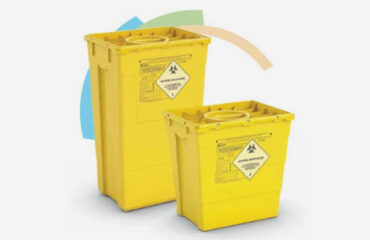All About Reclaim Waste
All About Reclaim Waste
Blog Article
Reclaim Waste Fundamentals Explained
Table of ContentsThe 45-Second Trick For Reclaim WasteThe Main Principles Of Reclaim Waste 9 Easy Facts About Reclaim Waste ShownReclaim Waste for DummiesThe 7-Minute Rule for Reclaim Waste
Check out the kinds, occurrences, and forms of fluid waste. Domestic sewer waste describes the waste and products from a household sewage-disposal tank. This sort of waste is created by human beings in residences, colleges, and various other buildings. This only consists of septic tanks that have a drainpipe area. The proper monitoring and disposal of domestic sewer waste require fluid waste to be transferred to a sewer therapy plant where the appropriate methods and tools are put on purify and throw away waste.
Commercial waste usually includes possible risks, such as flammable products or a combination of fluid and solid waste products, and requires an advanced and thorough disposal process. The disposal of business waste usually entails the purification of waste prior to transport to guarantee safe and correct disposal. Hazardous waste is developed from results and runoff of industrial processes and manufacturing.
This sort of waste can not use the exact same sewage monitoring transportation or processes as septic or industrial fluids. The commercial waste management process calls for the assessment and testing of fluid waste before it undergoes the disposal procedure (liquid waste disposal). Overflow waste is the liquid waste that comes from runoff and excess stormwater in very inhabited areas or cities
Overflow waste can cause contamination and flooding if not handled properly. Ensuring correct waste administration can avoid disasters and lower environmental injury.
Facts About Reclaim Waste Uncovered
Get in touch with PROS Services today to discover our waste administration and disposal solutions and the proper methods to look after the liquid waste you create.
(https://businesslistingplus.com/profile/reclaimwaste1/)Do you know what takes place to your water when you disengage, purge the bathroom or drain pipes the washing machine? No? Well, it's worth knowing. This supposed 'wastewater' is not just an essential resource yet, after treatment, will certainly be released to our land, rivers or the ocean. Made use of water from toilets, showers, bathrooms, kitchen sinks, washings and industrial processes is referred to as wastewater.

water utilized to cool machinery or tidy plant and devices). Stormwater, a form of wastewater, is drainage that moves from agricultural and urban locations such as roofing systems, parks, gardens, roadways, paths and gutters right into stormwater drains, after rain. Stormwater moves neglected straight to local creeks or rivers, at some point reaching the sea.
Examine This Report on Reclaim Waste
In Queensland, a lot of wastewater is dealt with at sewage treatment plants. Wastewater is moved from residential or commercial sites through a system of sewers and pump stations, recognized as sewerage reticulation, to a sewer therapy plant.
The Division of Natural Resources advises city governments about handling, operating and keeping sewerage systems and treatment plants. In unsewered areas, city governments may require householders to install specific or household sewer treatment systems to deal with domestic wastewater from toilets, kitchens, restrooms and laundries. The Division of Natural Resources authorises the usage of family systems when they are verified to be efficient.
Most stormwater obtains no treatment. In some new communities, therapy of some stormwater to get rid of trash, sand and gravel has begun using gross toxin catches. Wastewater treatment happens in four stages: Gets rid of solid issue. Larger solids, such as plastics and various other objects mistakenly discharged to sewage systems, are eliminated when wastewater is passed through displays.
Wastewater then moves into big tanks where solids clear up and are gotten rid of as sludge. Grease and residue are skimmed from the surface area. Utilizes little living organisms recognizes as micro-organisms to damage down and get rid of staying dissolved wastes and great particles. Micro-organisms and wastes are included in the sludge. Removes nitrogen and phosphorus nutrients that can trigger algal flowers in our rivers and threaten marine life.
Reclaim Waste Can Be Fun For Anyone
Nutrient elimination is not readily available in all sewage therapy plants because it requires costly specialist devices. It is coming to be more common in Queensland. Clear fluid effluent generated after therapy might still include disease-causing micro-organisms. If this effluent is released into waterways such as rivers or the sea, the micro-organisms will ultimately pass away out.

Many wastewater moves he has a good point right into the sewerage system. Under the Act, regional federal governments provide authorizations and permits for eco appropriate tasks (ERAs) entailing wastewater releases that may have a neighborhood impact.
The Definitive Guide for Reclaim Waste
Or else, samples are taken for lab evaluation. Typically several tests are required to develop the levels of each of the different contaminants such as oils, heavy steels and pesticides in water. Tracking offers valid info about water high quality and can validate that permit problems are being fulfilled. The info gotten via surveillance provides the basis for making water quality decisions.
Report this page